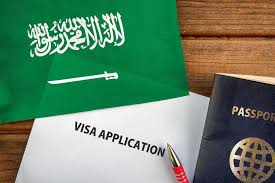Saudi Visa Airports and Ports of Entry

When traveling to Saudi Arabia, it’s crucial to understand the various airports and ports of entry where you can present your Saudi visa. With the growing number of travelers heading to this culturally rich and economically vibrant nation, knowing the available airports, ports of entry, and the relevant procedures can significantly streamline your journey. In this article, we’ll explore the key airports and ports of entry for Saudi Arabia, providing a comprehensive guide for international travelers. SAUDI VISA AIRPORT AND PORTS OF ENTRY
Understanding Saudi Visa Requirements
Before discussing the specific airports and ports of entry, it’s essential to understand the Saudi visa requirements. Saudi Arabia has multiple types of visas, including tourist, business, work, and religious visas (such as the Umrah and Hajj visas). Each visa type has specific requirements, and travelers must ensure they meet all the criteria before arriving in the country. Obtaining a visa usually involves an application process, either through the Saudi consulate or online via the eVisa platform.
Major Airports in Saudi Arabia
Saudi Arabia boasts several international airports that serve as major gateways for travelers entering the country. Below is a list of some of the most prominent ones:
1. King Abdulaziz International Airport (JED) – Jeddah
King Abdulaziz International Airport in Jeddah is one of the busiest airports in Saudi Arabia and the primary gateway for pilgrims traveling to Mecca for Hajj and Umrah. The airport has a dedicated terminal for Hajj pilgrims and offers a wide range of facilities and services, making it a crucial port of entry for religious tourists. With its modern infrastructure and proximity to Mecca, Jeddah’s airport is an essential entry point for millions of travelers annually.
2. King Khalid International Airport (RUH) – Riyadh
Located in the capital city of Riyadh, King Khalid International Airport is another major entry point for international travelers. This airport serves as a hub for both business and leisure travelers, given Riyadh’s status as the political and economic heart of Saudi Arabia. The airport features multiple terminals, catering to domestic and international flights, and is well-equipped with amenities to handle the influx of passengers.
3. King Fahd International Airport (DMM) – Dammam
King Fahd International Airport in Dammam is known for being one of the largest airports in the world by land area. It serves the Eastern Province, a key region due to its proximity to the oil industry and the Persian Gulf. The airport is a significant entry point for business travelers, especially those involved in the energy sector. Its strategic location also makes it a convenient gateway for visitors to nearby countries, including Bahrain and Qatar.
4. Prince Mohammed Bin Abdulaziz International Airport (MED) – Medina
As the primary airport serving the holy city of Medina, Prince Mohammed Bin Abdulaziz International Airport plays a vital role for religious pilgrims. It is especially busy during the Hajj and Umrah seasons, offering direct flights from many international destinations. The airport has been modernized to provide a welcoming experience for the millions of pilgrims who arrive each year.
Ports of Entry in Saudi Arabia
In addition to airports, Saudi Arabia has several seaports and land border crossings that serve as entry points for travelers. These ports of entry are vital for international trade and passenger traffic.
1. Jeddah Islamic Port
Jeddah Islamic Port is one of the largest and busiest seaports in the Middle East. Located on the Red Sea, it serves as a major entry point for goods and passengers arriving by sea. The port is particularly important during the Hajj season, as it handles the arrival of pilgrims from various parts of the world. Jeddah Islamic Port is equipped to manage both commercial and passenger vessels, making it a crucial gateway to Saudi Arabia.
2. King Abdulaziz Port – Dammam
King Abdulaziz Port in Dammam is another significant seaport in Saudi Arabia. It is the main port on the Persian Gulf and serves the Eastern Province. The port handles a substantial amount of the country’s import and export activities and is a key entry point for goods entering Saudi Arabia. In addition to its commercial significance, the port also facilitates passenger travel, particularly for those arriving from neighboring Gulf countries. SAUDI VISA EXEMPT COUNTRIES
3. Ras Al Khair Port
Ras Al Khair Port, located in the Eastern Province, is a specialized industrial port primarily serving the mining and minerals industries. However, it also plays a role as a port of entry for goods and materials required by these industries. The port is part of Saudi Arabia’s broader efforts to diversify its economy by developing its non-oil sectors, making it an important node in the country’s logistics network.
4. Land Border Crossings
Saudi Arabia shares land borders with several countries, including Jordan, Iraq, Kuwait, Bahrain, Qatar, the United Arab Emirates, Oman, and Yemen. There are multiple land border crossings that serve as ports of entry for travelers and goods. Some of the key land border crossings include:
- Al Haditha Border Crossing: Located on the Saudi-Jordanian border, this crossing is one of the busiest land ports in the region. It serves as a major entry point for goods and passengers traveling between Saudi Arabia and Jordan.
- Al Raqa’i Border Crossing: Situated on the Saudi-Iraqi border, this crossing is vital for trade between the two countries. It has gained importance in recent years as Saudi Arabia and Iraq have strengthened their economic ties.
- King Fahd Causeway: This bridge connects Saudi Arabia to Bahrain and serves as a crucial port of entry for travelers and goods. The causeway is a key route for business and tourism between the two countries.
Procedures at Airports and Ports of Entry
When arriving at any of Saudi Arabia’s airports or ports of entry, travelers must go through several procedures, including passport control, visa verification, and customs clearance. Here’s a general overview of what to expect:
1. Passport Control
Upon arrival, travelers must present their passport and visa to the immigration officers at passport control. It is essential to ensure that your passport is valid for at least six months from the date of entry and that you have the appropriate visa for your stay.
2. Visa Verification
Immigration officers will verify the details of your Saudi visa. For those arriving on an eVisa, it is advisable to carry a printed copy of the visa confirmation to avoid any issues. The officers will check the visa type, validity, and any restrictions that may apply to your stay.
3. Customs Clearance
After passing through immigration, travelers will proceed to customs. Saudi Arabia has strict regulations regarding the importation of certain items, including alcohol, drugs, and religious materials. It is important to declare any items that may be restricted or prohibited.
4. Health and Safety Checks
Given the global health concerns, particularly in the wake of the COVID-19 pandemic, health checks may be conducted at the airports and ports of entry. Travelers may be required to provide proof of vaccination or undergo temperature checks as part of the entry process.
Tips for a Smooth Entry into Saudi Arabia
To ensure a hassle-free entry into Saudi Arabia, consider the following tips:
- Double-check your visa requirements: Ensure that you have the correct visa for your purpose of travel and that all your documents are in order.
- Arrive early: Whether you are entering through an airport or seaport, arriving early allows you to go through the necessary procedures without feeling rushed.
- Be prepared for health checks: Carry any required health documentation and be aware of the current health regulations.
- Respect local customs and laws: Familiarize yourself with Saudi Arabia’s customs and laws to avoid any misunderstandings during your entry process.
Conclusion
Saudi Arabia’s airports and ports of entry are well-equipped to handle the growing number of international travelers and goods entering the country. Understanding the key airports, ports of entry, and the procedures involved can help ensure a smooth and efficient entry into Saudi Arabia. Whether you are visiting for business, religious pilgrimage, or leisure, being prepared with the right information is the first step toward a successful trip to this fascinating country.
